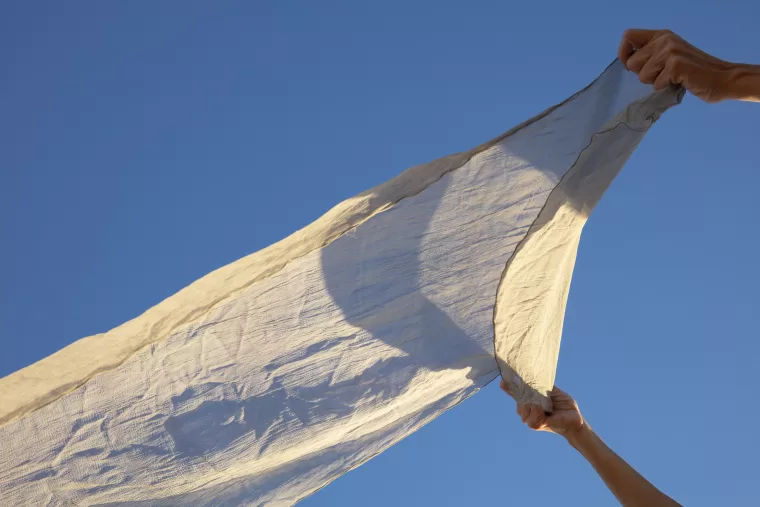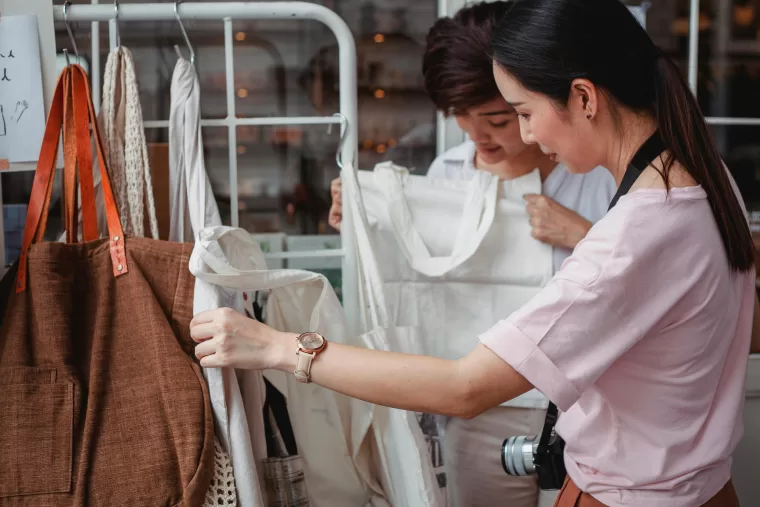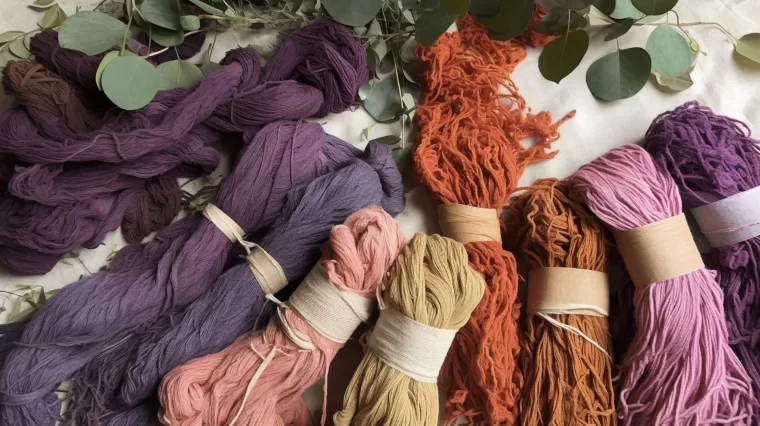By its definition, luxury seems to be at odds with a sustainable or resource-conscious approach. For something to be luxurious, it means no expense is spared and exclusivity is touted – but, can the luxury fashion industry actually champion sustainability? Sustainability in the fashion industry has become a critical issue, and the shift towards sustainable practices is increasingly becoming a focal point for both consumers and brands.
In asking how luxury brands can be more sustainable, this article explores the complex relationship between luxury fashion brands and sustainability, examining current practices, consumer demands, and innovative strategies for achieving sustainable luxury. We will also discuss how fashion ERP software can play a crucial role in helping luxury brands achieve their sustainability goals while maintaining their premium positioning.

The Sustainability Paradox in Luxury Fashion
Is Luxury Fashion Sustainable?
While fashion is a huge industry, and the majority of brands are not luxury, the global industry creates 10% of the world’s carbon emissions, produces 20% of the world’s wastewater, and is currently missing the Paris climate agreement by 50%. Luxury brands typically account for a small percentage, and while clothing is made in limited amounts and uses high-quality materials and craftsmanship, it can still result in significant waste and environmental impact. However, the growing consumer demand for sustainable luxury is challenging brands to rethink their practices. The question of whether luxury fashion is sustainable may be murky, but the possibility of sustainability is not far-fetched.
Analysing the Inherent Conflict
There is an inherent conflict between the use of exotic materials, intensive manufacturing processes, a focus on exclusivity and rarity on one side, and sustainable principles on the other. For example, the use of rare animal skins or metals can have significant ecological impacts. Moreover, the traditional luxury business model, which emphasises scarcity and exclusivity, can encourage waste and inefficiency.
Growing Consumer Demand for Sustainable Luxury
However, consumers and lawmakers are more environmentally conscious than ever. Many reports have concluded the same as Farfetch and Boston Consulting Group’s latest; almost two-thirds of consumers are focused on how committed brands are to sustainability when buying luxury products. Up to 80% believe brands are responsible for the full lifecycles of their products. This shift in consumer attitudes and spending is pushing luxury brands to adopt more sustainable practices, from sourcing eco-friendly materials to implementing circular fashion models.

Pioneering Sustainability in the Luxury Sector
Case Studies of Successful Sustainable Practices
These brands and Zedonk partners are making significant strides in sustainable fashion, each in their unique ways, from material choices to production methods and social responsibility initiatives.
- Chinti & Parker prioritises creating high-quality, timeless pieces designed to last, using the finest fabrics and yarns to ensure durability, countering the fast fashion trend. As a member of the Sustainable Fashion Alliance, they support the sustainability of the cashmere industry by using natural materials and fully-fashioned knitwear techniques that minimise waste. They also repurpose leftover yarns and fabrics from previous seasons. The brand partners with family-owned and vertical factories to emphasise transparency and ethical production practices, ensuring quality and sustainability criteria are met. Additionally, they believe in the importance of tracing the origin of their materials for transparency and accountability.
- Collina Strada is known for its commitment to sustainability and transparency. The brand often uses deadstock fabrics and recycled materials in its collections. They also aim to educate consumers on the importance of sustainability through their designs and public communications.
- Bethany Williams incorporates sustainability and social responsibility into her brand by using recycled and organic materials. Her collections often highlight issues such as homelessness and social inequality, with proceeds supporting related causes.
- Mother of Pearl focuses on creating sustainable luxury fashion. The brand uses organic cotton, Tencel, and other sustainable fabrics. They also emphasise traceability and ethical production practices throughout their supply chain.
- Cecilie Bahnsen is committed to sustainability through the use of deadstock fabrics and local production. The brand aims to minimise waste and create timeless, high-quality pieces that are designed to last.
How Can Luxury Brands Be More Sustainable Without Compromising Quality?
There are a few key and broad strategies that luxury brands can adopt to enhance sustainability without compromising quality. These include:
- Sustainable Sourcing: Using eco-friendly and ethically sourced materials.
- Circular Fashion: Implementing recycling and upcycling programs to reduce waste.
- Innovative Manufacturing: Adopting energy-efficient and low-waste production methods.
Defining and Achieving Sustainable Luxury
Key Components of Sustainability in Luxury Fashion
What is sustainable luxury? To answer that question, sustainability in luxury fashion encompasses several key components:
- Ethical Sourcing: Ensuring materials are sourced responsibly, considering environmental and social impacts.
- Eco-Friendly Materials: Utilising organic, recycled, or innovative materials that reduce environmental harm.
- Transparency: Providing clear information about the supply chain and production processes.
Innovative Materials and Production Methods
Some luxury brands have started using innovative materials and production methods that are both sustainable and exclusive. For instance, bio-fabricated materials like lab-grown leather, mycelium and other plant-based textiles are gaining traction. Additionally, digital manufacturing techniques, such as 3D printing, can minimise waste and improve efficiency.

Positioning Strategies for Sustainable Luxury Brands
Communicating Sustainability Efforts
Consumers need to be made aware of how their favourite brands are embracing sustainability. Clear, honest and effective communication is vital for positioning a luxury brand as sustainable. Brands should be transparent about their sustainability practices and share their journey with their ever more informed consumers. In this regard, storytelling can be a powerful tool, highlighting the brand’s commitment to environmental and social responsibility.
Balancing Luxury Appeal with Eco-Conscious Messaging
Consumers also need to be shown that a premium image and promoting sustainability can work together. This can be achieved by emphasising the quality, craftsmanship, and exclusivity of sustainable products. Brands need to highlight the uniqueness and innovation of their eco-friendly materials and commitment in an equally eco-conscious way, addressing issues and not just paying lip service.
Leveraging Sustainability as a Unique Selling Proposition
Unique selling propositions (USP) are important for luxury brands to distinguish themselves. By showcasing their commitment to sustainable practices, brands can differentiate themselves in a competitive market. Trends, sales and studies have shown how consumers are increasingly willing to pay a premium for products that align with their values, making sustainability a valuable USP to showcase.
The Role of Technology in Sustainable Luxury Fashion
Introducing Fashion ERP Software
Technology can act as both a positive or negative for sustainability, depending on how it’s used. Tools like Fashion ERP (Enterprise Resource Planning) software can be a game-changer for luxury brands. ERP systems integrate various business processes, providing a comprehensive view of operations and enabling better decision-making overall.
How ERP Systems Can Optimise Processes
ERP systems can optimise a business’s processes in a few ways, namely by:
- Reducing Waste: Implementing efficient inventory management to minimise overproduction and waste.
- Enhancing Transparency: Providing detailed insights into the supply chain, ensuring ethical sourcing and production practices.
- Improving Efficiency: Streamlining production processes using fashion production software to reduce time wasted and energy consumption.
- Better Communication: With streamlined processes and more data, better decisions can be made, less miscommunication and clearer goals can be achieved.
The Impact of Data-Driven Decision Making
Making decisions based on accurate and up-to-date data is imperative for sustainable practices. ERP systems can provide real-time data on various aspects of the business, from raw material sourcing to production efficiency. This enables brands to identify areas for improvement and implement sustainable practices more effectively.

A Sustainable Future For Luxury Brands?
Sustainability in luxury fashion presents both a challenge and an opportunity – for the brands themselves but also for how we consume fashion at large. While we know that there are inherent conflicts between luxury and sustainability, consumer demand and innovative practices are driving the industry towards a more sustainable future. Leading brands like Chinta & Parker, Collina Strada and others are setting examples with their changes and helping answer the question of how luxury brands can be more sustainable. By adopting innovative materials, transparent communication, and leveraging technology like fashion ERP software, luxury brands can achieve their sustainability goals while maintaining their premium positioning. Change can be slow, but the important thing is that it happens.
As consumer awareness and demand for sustainable luxury continue to grow, brands that embrace sustainability will not only contribute to a better world but also gain a competitive edge in the market. Sustainable luxury is no longer an option but a necessity for the future of fashion, and we at Zedonk want to help your brand achieve this.


